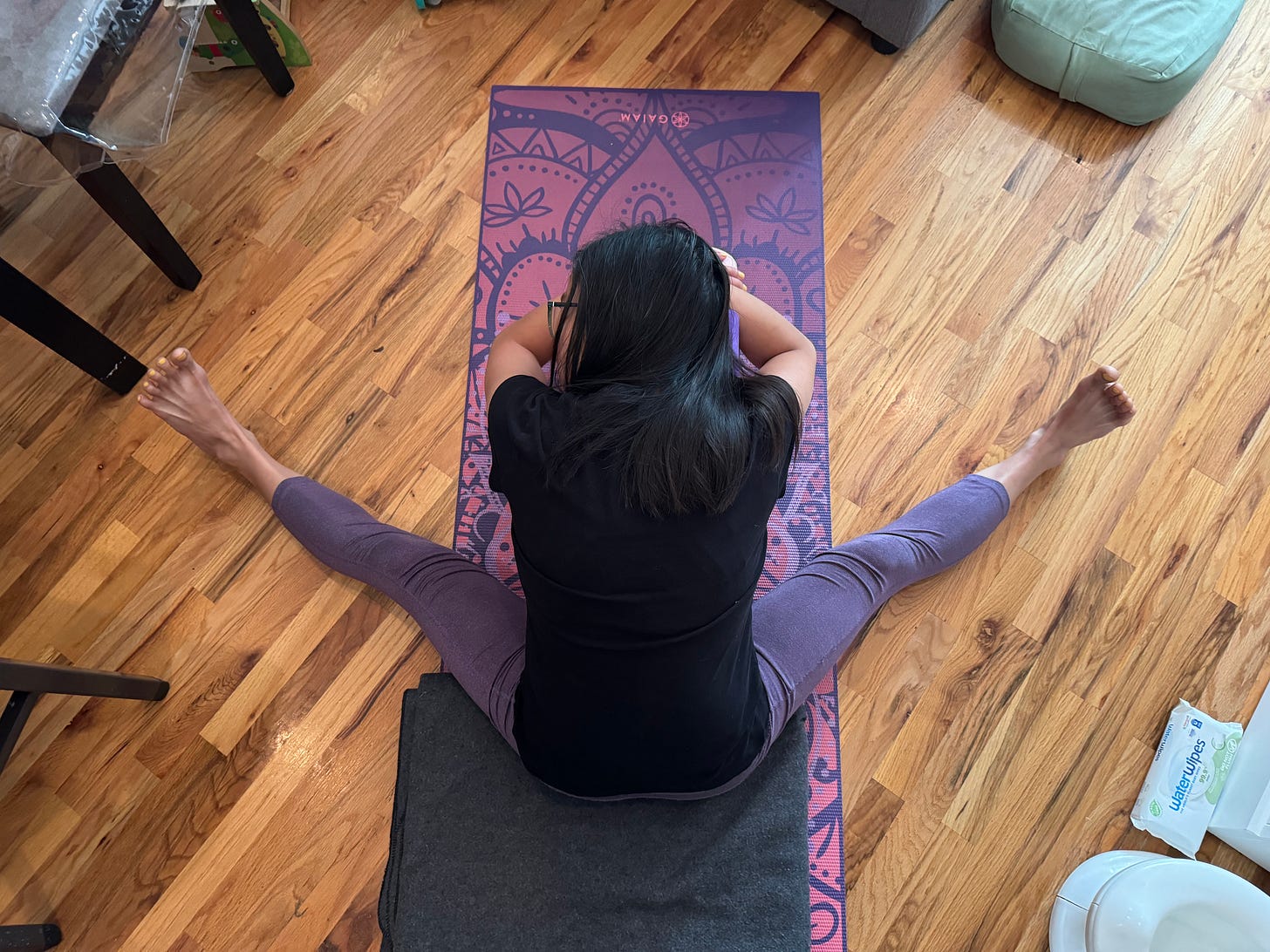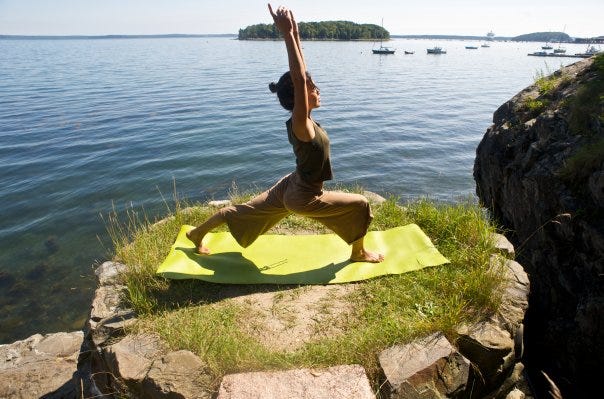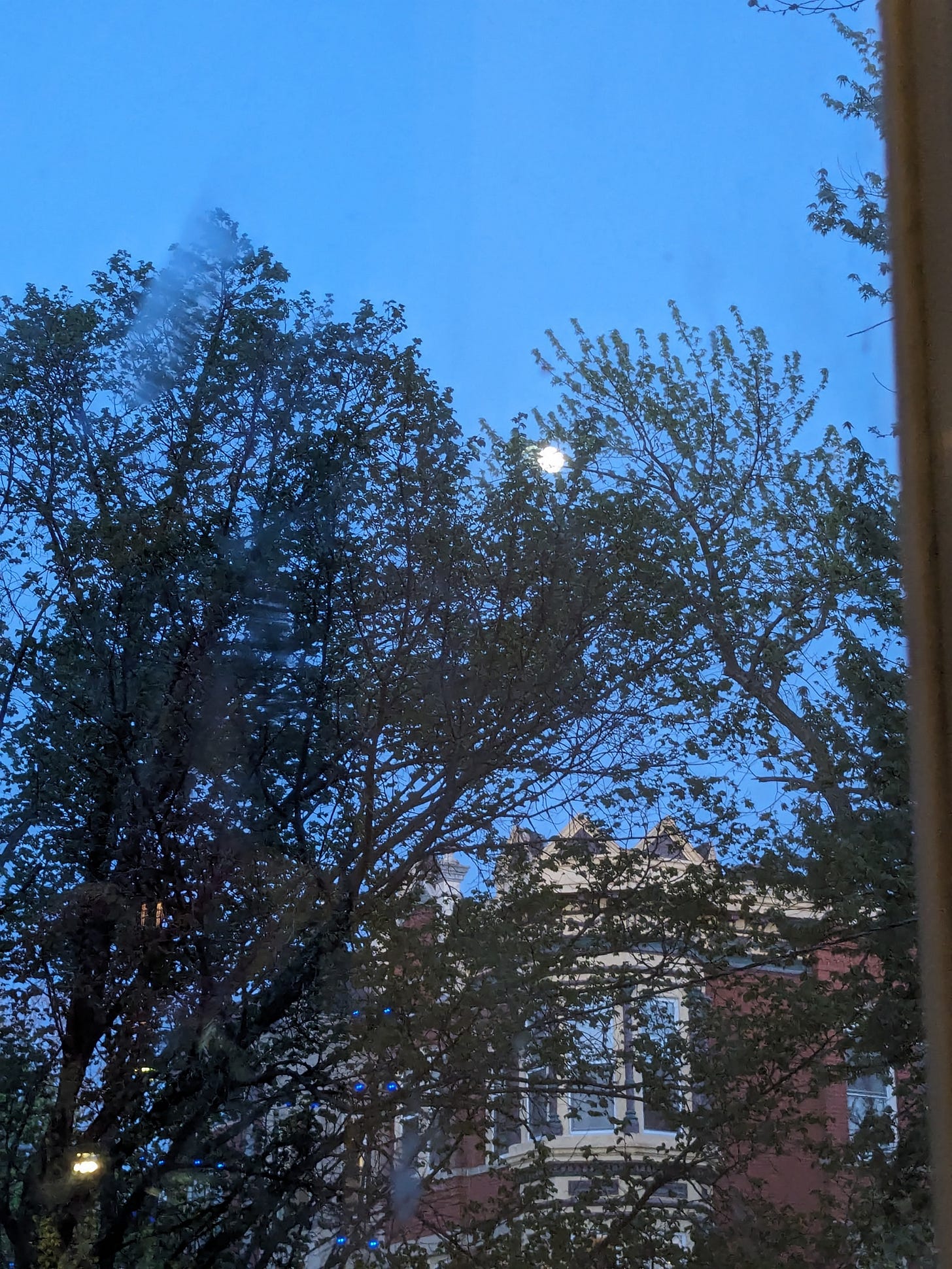restorative yoga is such great medicine for burnout
Tapas and tapasya
I love Spanish tapas - those small plates meant to be shared. I love food but I don’t love eating large quantities, so little bites are perfect for me. When I lived in Barcelona, I really enjoyed that you could just pop into a hole-in-the-wall place and get some tapas and drinks and it was casual. Here in the U.S., tapas restaurants tend to be on the fancier side: sleek, higher-priced, and not so casual.
Now and then I think of areas of overlap between Spanish tapas and yogic tapas, sometimes called tapasya. What is tapasya in yoga? Sometimes it’s translated as austerities or discipline; others define it as ‘to burn’ or ‘to purify.’ Either way, a sort of transformational intensity is implied. Unfortunately, this has sometimes been interpreted as a sort of ‘no pain, no gain’ type of approach, but there’s no need for self-torture here. It’s totally possible to be highly disciplined in a gentle way; in fact, being gently persistent is an art in itself and requires us to know ourselves well (do we need more intensity? or more rest and relaxation?) and also to know the practice of yoga in all its depth. That is why I’ve spent so much time focusing on the yamas and niyamas, the koshas, and the more subtle aspects of yoga in general in the past several months. Without these parts of yoga philosophy, it’s so easy to fall into the trap of pushing ourselves too hard physically for no good reason.
But back to Spanish tapas - they keep resurfacing in my mind as such an apt metaphor for yogic tapas. The image is this: small, pleasing doses of yoga practice shared with others. You might think of yoga as a solitary practice, and in many ways it is, but at its heart, it’s meant to connect us with everyone and everything else.
“Those who see all creatures in themselves
And themselves in all creatures know no fear.
Those who see all creatures in themselves
And themselves in all creatures know no grief.
How can the multiplicity of life
Delude the one who sees its unity?”
-The Upanishads, translated by Eknath Easwaran
You might come to yoga for something very mundane, like the desire to feel better in your body or to relieve stress. But there is more there, so many hidden gems that get unearthed the longer you practice. And you are more likely to practice for a long time if you take it in small, pleasing doses: an unending, multi-course grazing of tapas, tapas, and more tapas.
Tapas in yoga is the fire that keeps us going. It is meant to be a slow burn, like an ember or a candle flame. Yoga is that fine balance between letting the flame go out and letting it blaze into a raging fire.
Containing the fire
As I post this on the full moon, I reflect on the fire element in its many forms. Generally, the moon is associated with the water element since both water and moon are connected with emotions. But as we approach summer time here in the Northern Hemisphere, the element of fire is slowly warming our lives and it’s reminding me that moonlight is just a soft reflection of the sun, that fiery orb that keeps us alive.
The light of the moon offers us this metaphor: how do we take the intense light and heat of the sun and soften it? And not only that, but how do we learn to bring a sort of rhythm to it as we move through various phases over and over again? This is why the moon has been so often associated with women, who are also rhythmic biologically because of processes like menstruation.
To translate the concept of the fire element into everyday life: How do we stop burning the candle at both ends, so to speak, and allow ourselves some time in the shadows before we slowly work up to our full illumination? In yoga practice, this might look like several days of a more relaxed practice, followed by a more intense yoga session when our minds and bodies call for it. We don’t always need to be blazing ahead at full speed. Sometimes doing less now is what helps us build the reserves to do more later.
We all need the fire element to give us that get-up-and-go energy and to help us keep focus. There’s such thing as too much of a good thing, though, and that’s where we can bring in the other elements: earth provides a stable place for fire to burn, water keeps the flames from getting out of control, and air and ether elements provide space for fire to shed light without overheating us. It comes back again to that idea of tapas and yoga in small, pleasurable doses. How can you make practice feasible (many moms find shorter sessions more doable than longer ones)? How can you make it something to look forward to? Tune into what your body and mind need most…
In yoga practice, earth brings us stability (think: holding poses a bit longer or creating more support with props). Water brings us fluid motion, transition between postures and breaths, and helps us honor our emotions. Air comes in the form of pranayama (breathing practices) while ether is the space that contains it all: it is our consciousness witnessing and observing ourselves as we practice.
Bringing it all together
Full moon is a great time to take stock of our yoga practices and our lives in general. How have we been practicing over the last several days or weeks? Has our practice matched our needs (physically, mentally, and emotionally), or do we need to adjust things a bit?
It takes some practice to really assess where we’re at when it comes to what we need from our yoga practices. It means we have to let go of any preconceived notions of what we think yoga is, or how it should look or feel, and open up to the fact that our needs can shift over time. It means we need to really pay attention, be honest with ourselves, and practice patience in moments when we realize that putting our foot on the brake pedal is more appropriate than just stepping on the gas every time we practice.
Here’s an example: my little tapas-size serving of yoga for this week will most likely be some brief combination of standing poses as well as some restorative yoga poses. I’ve been feeling burnt out (too much fire) and scattered (too much air). Standing poses and some restorative yoga will bring in the earth element to help me stabilize my body and mind.
What about you? Have you been overemphasizing one or two elements too much? Are you feeling burnt out (fire), drowning in emotion (water), or spaced out and scattered (air)? Let’s play with this together. In the next post I’ll add some more examples of how different yoga practices help us embody the different elements. I’d love to hear your thoughts and ideas, too! What tapas-sized, element-focused practices do you plan to enjoy this week?
Here are some resources on yoga and the elements if you’d like to explore more:
https://www.ekhartyoga.com/articles/philosophy/journey-through-the-5-elements-earth
https://www.yogabasics.com/learn/energy-anatomy/5-elements-of-nature/
Happy full moon! I hope you get a moment to gaze at that soft light:)
a glimpse of last month’s full moon; how much I appreciate this connection to nature in my urban lifestyle.






I always think of Spanish snacks when I see/hear Tapas 🤣
I just was writing in my journal about finding the right practices to match my energy/needs. We’re getting ready to travel so I’ve been finding meditation and nidra helpful, and a little asana/movement to shake out and move all the anxious/anticipatory energy.